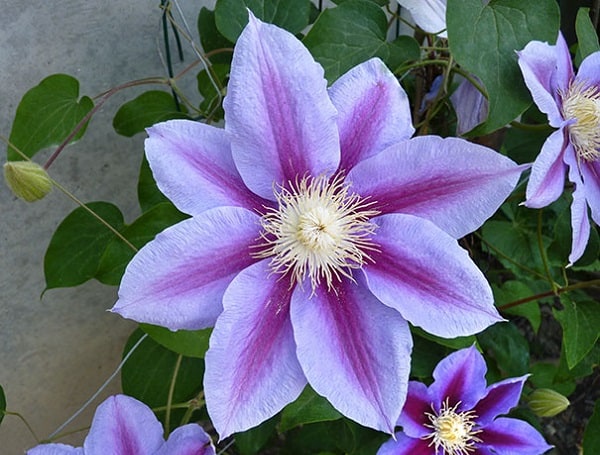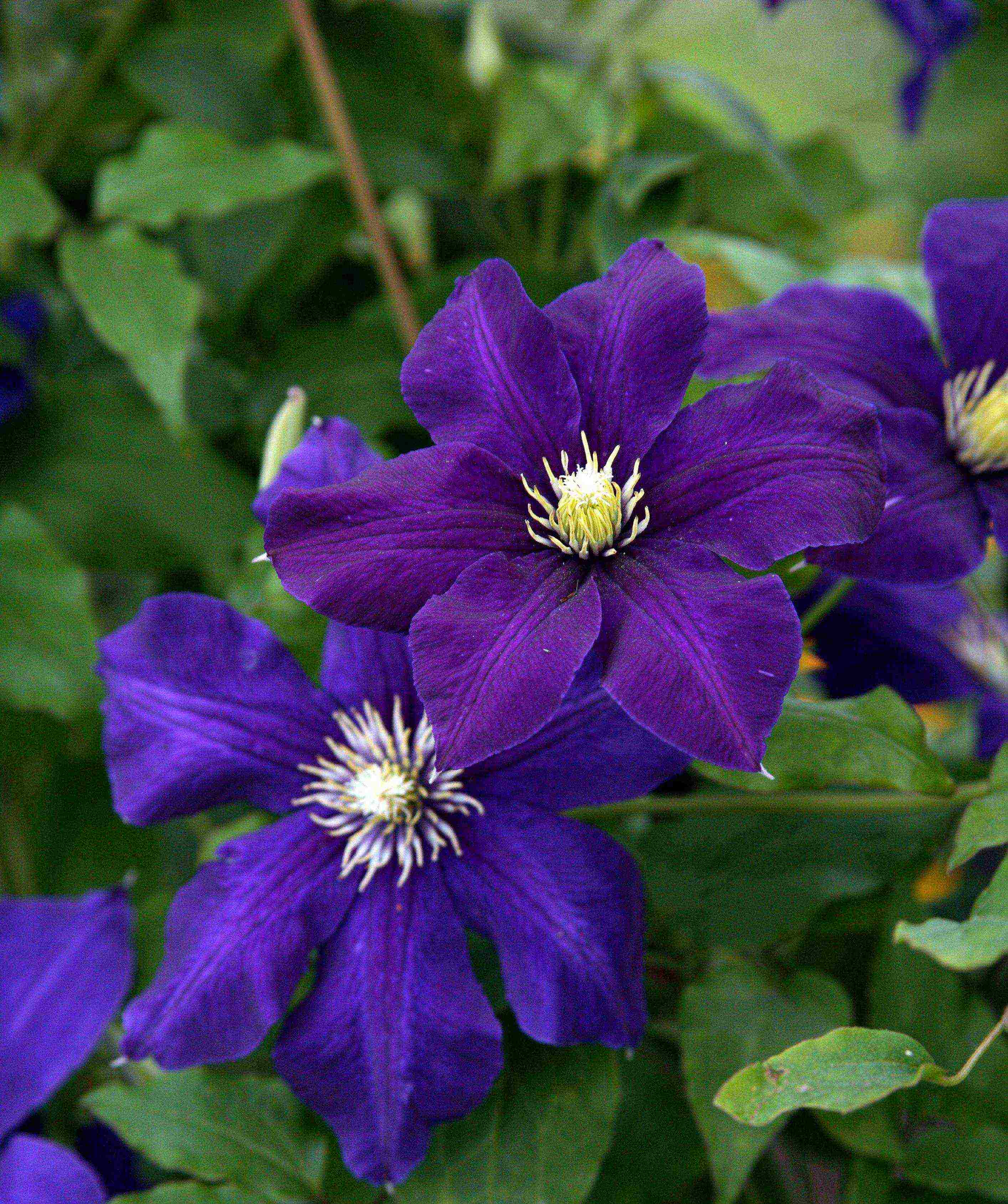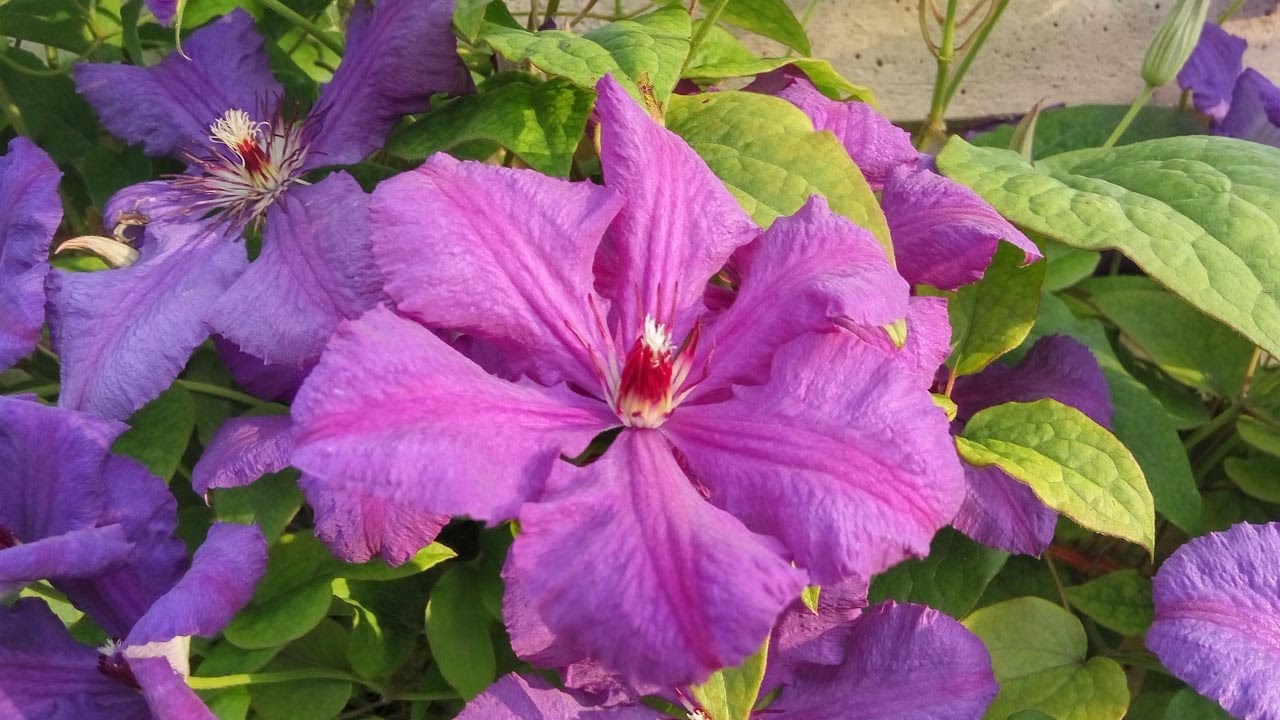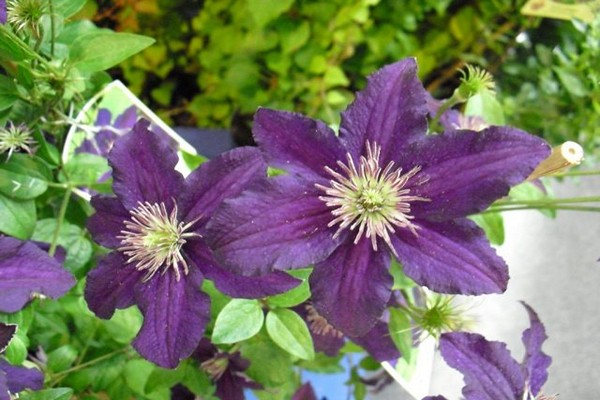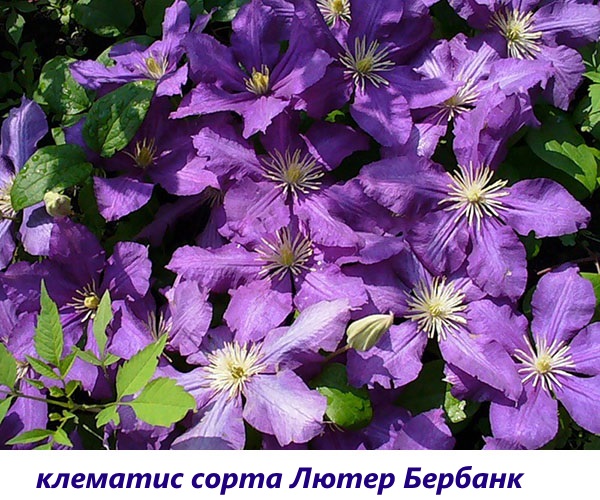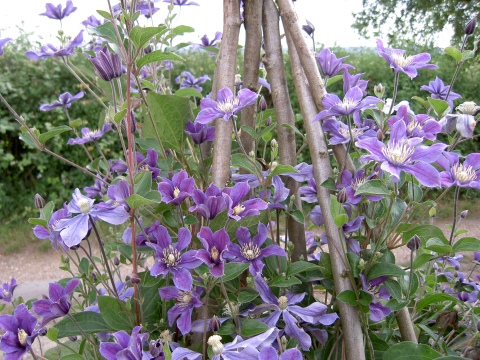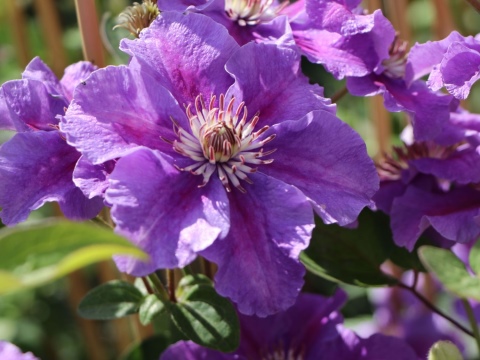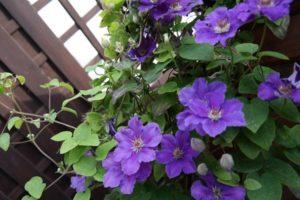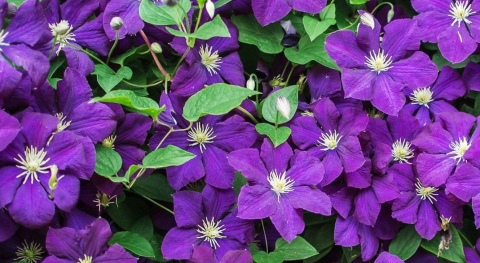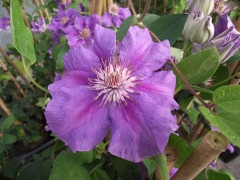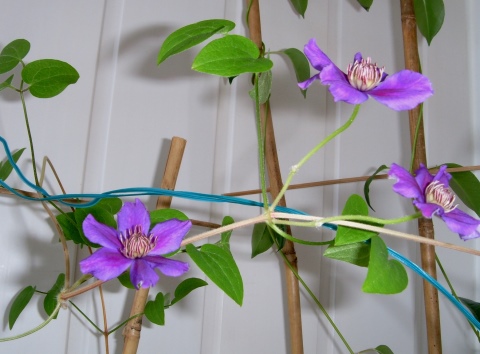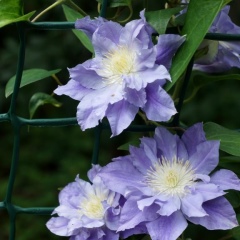Nelly moser clematis, leaving
Clematis nelly moser requires abundant and regular watering, loosening of the soil and needs periodic feeding.
Watering
Water the plant every week, paying attention to soil moisture. Excess moisture will harm the root system
Watering is best done in the morning so that the water dries out and is absorbed into the soil until night.

Top dressing
Clematis needs to be fed regularly.
The first feeding during vegetation and rapid growth should be organic. An infusion of mullein or bird droppings (1 liter of organic matter per 10 liters of water per adult bush) is great. Time for a second feeding - plant budding. During this period, mineral fertilizers with a low nitrogen content (60-80 grams) or potassium fertilizers without chlorine content are applied along with phosphorus (50:50). Such mineral feeding promotes the formation of numerous flowers and their abundant flowering. And the third top dressing is needed after flowering, the composition of the fertilizer is used the same as in the second top dressing. During flowering, feeding should be stopped.
Pruning
Since the variety Nelly Moser belongs to the second pruning group (spring flowering occurs on old overwintered shoots, and in summer - on young ones), it is carried out according to the following principle:
- The first pruning of last year's shoots is done in June, when they have faded. You can cut off both the part of the shoot that has faded, and to the base, in order to thin out the bush a little.
- The second pruning is done in autumn - young shoots are shortened to a length of 30-50 cm. Dry and broken branches are removed completely.
Some growers advise not to prune young shoots, but to roll them up in a ring and carefully cover them for the winter.

Shelter for the winter
Preparation for the winter of clematis begins when the soil freezes by 3-5 cm.For wintering, the liana must be protected from frost. The bushes are sprinkled with dry sand or peat, the remaining shoots are folded into loops and covered with spruce branches or non-woven covering material, securing with pins. The correct shelter provides lianas with comfortable wintering conditions.

Diseases and pests
Clematis are susceptible to viral and fungal diseases. The most dangerous for a perennial plant is a disease caused by a fungus - wilting (wilt), which suddenly occurs during budding and active growth. Shoots wither and dry quickly. The infected bush should be dug up and burned. Next spring, for prevention, the soil should be treated with solutions of copper or ferrous sulfate, and in the summer with a suspension of copper oxychloride.

In addition to wilt, the plant is susceptible to infection with powdery mildew, rust and gray mold.
Gray rot appears as brown spots on shoots and leaves. Infection occurs quickly, so the treatment of the bush must be carried out as soon as possible. The infected bush is sprayed and watered with a foundationol solution.
Rust is manifested by the presence of red bumps on the shoots and leaves, in which there are spores of the fungus. Rust leads to gradual wilting of foliage. Having noticed the first signs of the disease, you should remove the infected leaves and shoots and spray the bush with 2% Bordeaux liquid.

Leaf spot (ascochitis) is manifested by brown spots on the edges and in the center of the leaves, which makes them brittle, dry, and holes form on them. The disease slows down the process of photosynthesis, preventing the plant from developing and slowing down flowering. Infected leaves must be removed, and the plant must be treated with a solution of copper sulfate.
Powdery mildew is a white coating on leaves and flowers. The plant stops growing and flowering.As a preventive measure, it is necessary to spray the bush with a solution: copper sulfate - 30 g, soap - 300 g, water 10 liters or a solution of soda ash.
Among the pests of clematis, there are: an attack on the plant by aphids, spider mites, to combat which any insecticides are used. And also snails, slugs that eat young shoots. To destroy the pests, bait is used - cabbage leaves, and the places of their movement are sprinkled with ash.



